In the world of medical billing, charge entry might seem routine, but its importance cannot be overstated. At its core, this step is responsible for converting patient visits into billable claims. Even a single mistake at this stage can lead to claim denials, revenue loss, and administrative headaches.

Across the U.S., healthcare providers lose billions annually due to preventable billing errors — many of which originate during charge entry. For that reason, understanding this process is not just helpful; it’s critical.
What Is Charge Entry in Medical Billing?
In simple terms, charge entry in medical billing is the act of recording medical services provided to a patient and assigning corresponding codes and charges into billing software. These details include CPT, ICD-10, and HCPCS codes based on the diagnosis and services rendered.
Once recorded, the data is used to create insurance claims, which are then submitted to payers. Accurate data input leads to clean claims. Conversely, errors during this stage account for over 25% of denied claims, according to the Medical Group Management Association (MGMA).
Why Accuracy in Charge Entry Affects Collections
Revenue cycle success hinges on clean claim submission. When charge entry is accurate, providers get paid faster and spend less time fixing rejections. On the other hand, incorrect entries delay cash inflow and increase the cost-to-collect.
According to the American Medical Association (AMA), the average cost to rework a denied claim is $25. If your practice processes hundreds of claims daily, that adds up quickly.
Industry Data That Shows the True Impact
| Metric | Impact of Poor Charge Entry | Source |
|---|---|---|
| Denial Rate | Up to 30% of claims denied due to charge errors | MGMA |
| Rework Cost | $25 per denied claim | AMA |
| Payment Delay | 10–14 days on average due to incorrect data | CMS |
| Lost Revenue | Over $125 billion annually due to billing mistakes | HFMA |
These numbers emphasize that charge entry in medical billing is more than clerical work — it’s a frontline defense against revenue leakage.
Step-by-Step Breakdown of the Charge Entry Process
Understanding the process helps uncover where errors typically occur.
1. Collecting Patient and Encounter Information
Before entering any charges, billing teams must verify the patient’s demographic data, insurance eligibility, and the details of the visit.
2. Applying Accurate CPT, ICD-10, and HCPCS Codes
Coding specialists assign procedure and diagnosis codes to the services rendered. They rely on the provider’s notes and documentation, making communication essential.
3. Entering Charges into Billing Software
Once verified, the charges are input into the system. Automated tools or manual entry may be used depending on the practice setup.
4. Reviewing Before Submission
Charge entries are reviewed using claim scrubbers or manually validated for consistency and compliance. Only after this check is the claim submitted to the payer.
How to Perform Charge Entry in Medical Billing Accurately
Performing charge entry in medical billing begins with verifying encounter notes and coding them with precision. Afterward, charges should be entered using practice-specific billing software, followed by a review phase to detect errors before claim submission. Using automated tools and checklists improves reliability at this stage.
What Can Go Wrong During Charge Entry?
Despite its importance, charge entry in medical billing is still a common source of error. Here are the most frequent mistakes:
Wrong CPT/ICD codes: Incorrect codes cause mismatches and automatic denials.
Duplicate entries: Repeated charges raise payer suspicion and may delay processing.
Missing modifiers: These impact reimbursement accuracy and must be included when applicable.
Mismatched data: Discrepancies between charge entry and clinical documentation raise red flags.
How to Improve Charge Entry for Better Results
Billing errors can’t be eliminated entirely, but several strategies reduce their frequency and severity.
Conduct Regular Pre-Bill Audits
Spot-check charges before claims are submitted. Many billing systems now offer AI-powered claim scrubbers that automatically detect potential problems.
Invest in Training
Keep billing teams updated with the latest CPT and ICD revisions. The AAPC recommends quarterly updates to training materials.
Use Charge Master Templates
Implementing standardized templates for commonly billed procedures helps avoid manual data entry mistakes.
Encourage Provider Involvement
When physicians clarify documentation or codes in real time, fewer errors occur downstream.
The Difference Between Charge Entry and Charge Capture
Though used interchangeably, these terms differ:
Charge capture is the process of identifying and recording services delivered.
Charge entry refers to entering those services into billing software with correct codes and rates.
Both are essential to claim generation, but charge entry is where most billing errors originate.
Manual vs. Automated Charge Entry: A Quick Comparison
| Feature | Manual Charge Entry | Automated Charge Entry |
|---|---|---|
| Accuracy | Prone to human errors | Reduces typos and omissions |
| Speed | Slower | Faster and scalable |
| Training Required | High | Moderate |
| Cost | Lower upfront, higher long-term | Higher upfront, lower long-term |
| Recommended For | Small clinics | Medium to large practices |
Key Takeaways for RCM Leaders
Over 25% of denials are rooted in errors during charge entry.
Even one missed modifier can affect reimbursements.
Practices using automation tools report up to 22% fewer resubmissions.
Regular audits and training lower denial rates significantly.
Frequently Asked Questions
- What is the charge entry process in billing?
It’s the step where coded charges for services are entered into billing software to generate claims. - Why is charge entry crucial for claim success?
Because inaccurate charge data leads to denials, payment delays, and administrative waste. - How can automation improve charge entry?
By reducing data entry errors, speeding up submissions, and flagging incomplete charges before submission. - Who is responsible for charge entry?
Billing staff, coding teams, or outsourced billing companies — depending on the setup. - What tools help improve charge entry accuracy?
Claim scrubbers, charge capture software, billing audits, and EHR-integrated automation systems.
Conclusion
Charge entry might seem like a small piece of the billing puzzle. However, it directly influences how much — and how fast — providers get paid. Given the high stakes, even minor mistakes should not be left unaddressed.
If you’re ready to strengthen your charge entry in medical billing, our specialists are here to help. Contact us today and see how you can reduce denials and improve collections from day one.


